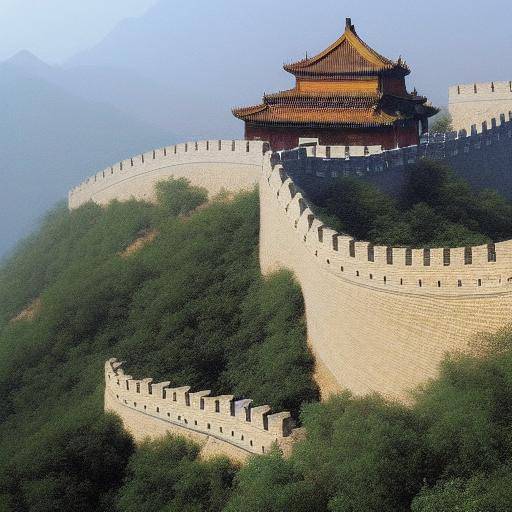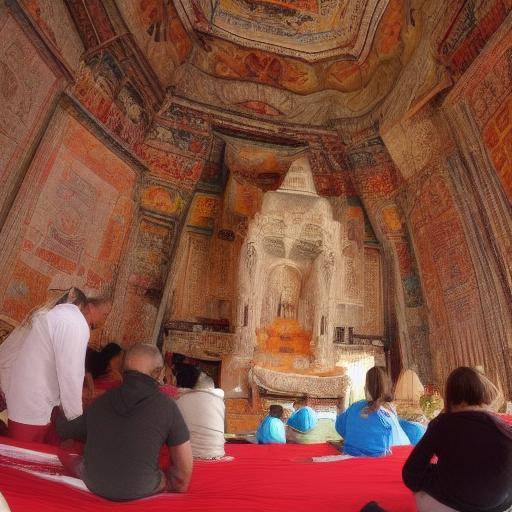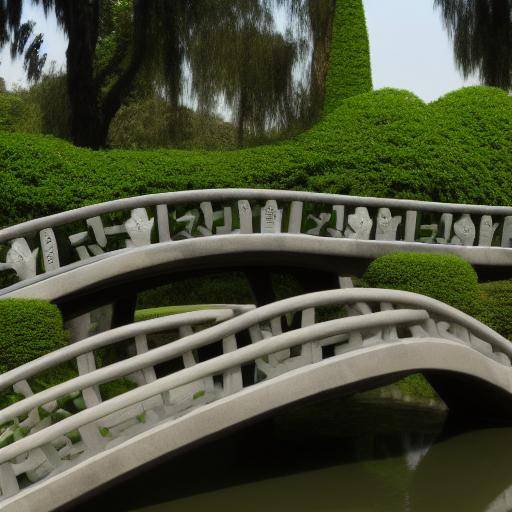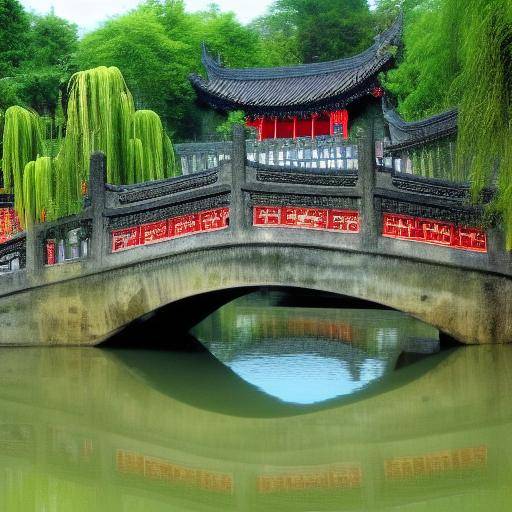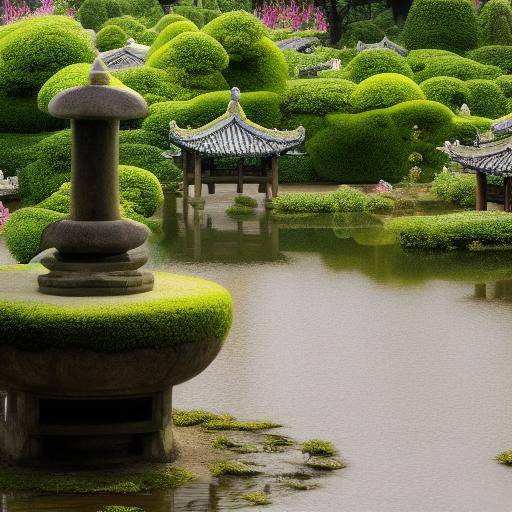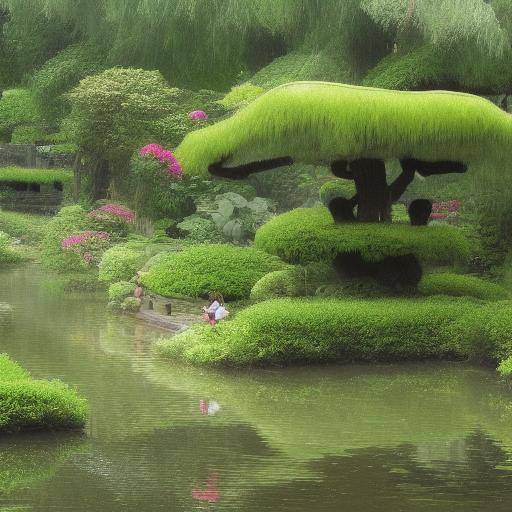
The Suzhou Gardens, located in China, are a highlight of Chinese nature and an impressive testimony of the landscape splendour of the country. These exquisite gardens are known for their visual aesthetics, but also host a diversity of fauna and flora that deserves to be explored. Throughout this article, we will immerse ourselves in the natural wealth and impressive architecture of the Suzhou Gardens, discovering the unique biodiversity that distinguishes them and their importance in the context of Chinese nature.
Introduction
The Suzhou Gardens are built as witnesses to the historic splendour of China and offer a window for harmonious interaction between nature and human intervention. This article will not only examine the incomparable beauty of these gardens, but also explore the biodiversity they host.
In ancient China, the gardens were considered not only as aesthetic spaces, but also as shelters for meditation and contemplation of nature. In this sense, the Suzhou Gardens stand out as a palpable testimony of the symbiotic relationship between flora, fauna and landscape architecture. Throughout this article, we will unravel the intricate network of life that thrives in this unique environment and how biodiversity intertwines with the history, culture and spirituality of China.
History and Background
The Suzhou Gardens, declared a World Heritage Site by UNESCO, have their roots in the rich history of China. They go back to the sixth century BC, during the Wu dynasty, and have evolved over the centuries, preserving their uniqueness and splendour at every historical stage. These exquisitely designed gardens reflect the influences of confucianism, taoism and Buddhism, and have been a crucible of creativity and artistic expression.
The meticulous design of the gardens, which includes pavilions, lakes, bridges and rocks, has been a form of art in itself, integrating nature in harmony with the architecture. Political and social changes over the centuries have also left a mark on the configuration and evolution of the gardens, making them a capsule of time that captures the very essence of Chinese history.
Deep analysis
The Suzhou Gardens are an ecosystem in themselves, hosting a variety of plants, trees and flowers, as well as a diversity of animal life. These gardens are important habitats for birds, insects and small mammals, serving as a vital refuge in the midst of the urban expansion of Suzhou. Local authorities and conservation groups have worked closely to preserve and protect this biodiversity, recognizing its value both from an environmental and cultural perspective.
Among the shelters of this wonderful ecosystem, you can find emblematic species such as bamboo, lotus and cherry, which have played a significant role in Chinese mythology and folklore over the centuries. The rich fauna includes multi-coloured butterflies, elegant cranes and ornamental tents that dance in the serene lakes, adding a magical dimension to the natural beauty of the gardens.
Comprehensive review
The relevance of the Suzhou Gardens and their biodiversity transcends their mere aesthetic appeal. These gardens encapsulate Chinese philosophy of harmony between man and nature, offering a permanent reminder of the need to preserve and nurture biodiversity in a world facing growing environmental challenges. Conservation efforts in these natural areas not only protect threatened species, but also contribute to the global health of the ecosystem and to the well-being of the human communities that depend on them.
Comparative analysis
By comparing the Suzhou Gardens with other natural spaces in China, a clear distinction arises in terms of its cultural and historical relevance. While classic Chinese gardens focus on the interaction between natural landscape and artistic expression, other natural environments, such as sacred mountains or natural reserves, prioritize the preservation of wildlife in its most pristine state, resulting in a more focused approach to pure biological conservation.
Traditional landscape architecture and design in the Suzhou Gardens are a testimony of the unique fusion between the creative imagination of designers and the serene majesty of nature. This symbiosis is a distinctive aspect of these gardens compared to other natural habitats or protected spaces in China, which makes them an extraordinary manifestation of harmonious coexistence between human action and nature.
Practical Tips and Accessible Tips
If you ever have the opportunity to visit the Suzhou Gardens, take the opportunity to participate in educational and awareness-raising programmes on the conservation and preservation of biodiversity. By supporting these initiatives, you contribute directly to the maintenance of this natural treasure. In addition, respect local regulations and avoid damaging the flora and fauna while enjoying the wonder of these gardens.
Conclusions and FAQs
Conclusions
The Suzhou Gardens not only represent a testimony of the rich history and architectural mastery of China, but also host immensely valuable biological diversity. As we continue to admire the visual beauty of these gardens, we must not lose sight of the importance of safeguarding the natural wealth that flourishes within it. Biodiversity in the Suzhou Gardens not only enriches aesthetic experience, but also reminds us of the imperative to preserve the fragile balance between humanity and nature.
Frequently asked questions
1. What is the story of the Suzhou Gardens?
The Suzhou Gardens have a history dating back to the sixth century BC, during the Wu dynasty, and have evolved over the centuries, reflecting significant cultural and religious influences.
2. What kind of wildlife can be found in the Suzhou Gardens?
The gardens host a variety of birds, insects and fish, as well as a diversity of emblematic plants and trees of Chinese culture.
3. Why is it important to preserve biodiversity in the Suzhou Gardens?
Biodiversity in gardens not only enriches aesthetic experience, but also plays a crucial role in the conservation of threatened species and ecological balance.
4. Is there a conservation program in the Suzhou Gardens?
Yes, local authorities and conservation groups work closely to preserve and protect the biodiversity of gardens through educational and awareness-raising programmes.
5. What is the relationship between the Suzhou Gardens and Chinese philosophy?
Gardens encapsulate the philosophy of harmony between man and nature, serving as a permanent reminder of this central teaching in Chinese culture.
6. What recommendations are there for visitors to the Suzhou Gardens?
It is recommended to participate in educational programmes and to respect local regulations to contribute to the preservation of the biodiversity of these gardens.
Concluding, the Suzhou Gardens are living witnesses of the harmonious interaction between nature and human creativity. Its unique biodiversity not only enriches the aesthetic experience, but also embodies the importance of preserving natural wealth in a constantly changing world. By exploring the fauna, flora and landscape architecture of the Suzhou Gardens, we enter into a universe of incomparable beauty that invites us to reflect on our relationship with nature and the imperative need to protect it for future generations.

